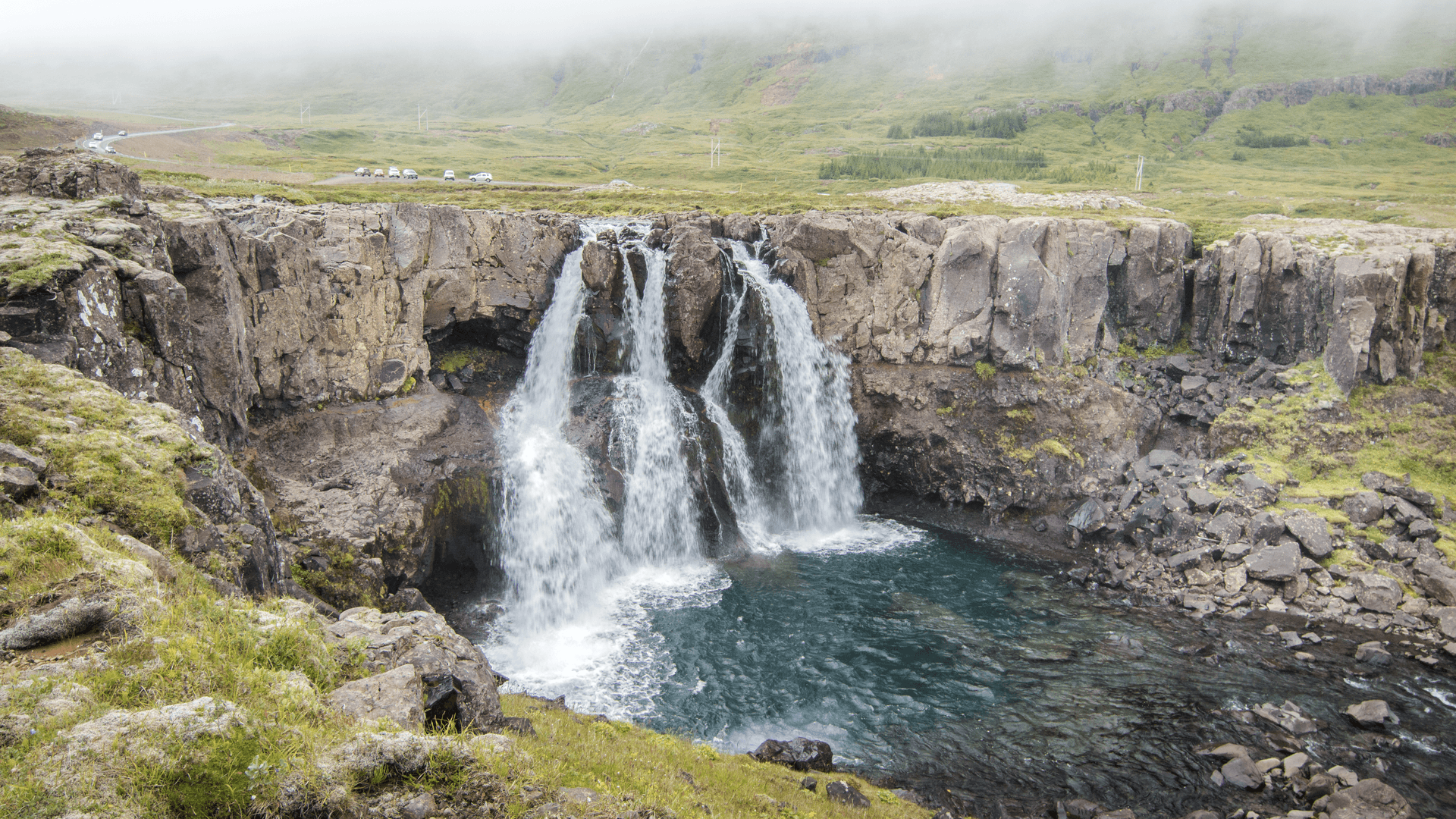You are here
Seyðisfjörður is a town located at the mouth of a fjord in the eastern region of Iceland. It has been a settlement since Iceland’s early period, and it is well known for its old wooden buildings and remnants of urban street configurations.
Mount Strandartindur (to the south) and Mount Bjolfur (to the north) create an impressive valley which the Fjardara River cascades down from almost 350 meters (1,150 feet). The Stafirnir Road, which follows the water down the river’s northern side, is one of Iceland’s most spectacular routes. An incredible hiking path begins at the Neðri-Stafur cliffs and the monument to Þorbjörn Arnoddssonrock. From here the town becomes visible on clear days as you cross the Herad district and the Fjardarheidi heath. While you can complete this hike as a there-and-back, many trekkers choose to start at the top of the valley and make a one-way descent all the way to the town along countless cascading waterfalls. Guided tours are also available from the town between the months of June and October.
From the monument, cross a metal bridge over a gorge. Turn left (downstream) toward a small information sign about the various hiking routes in the area. The path that follows the Fjardara River is #51 and marked by wooden stakes, most of which have painted yellow tops. You will immediately be welcomed by a series of waterfalls as you begin to make your way down this mossy slope on the south side of the waterway along the bank. At times, you may have to hop over some small streams and wet areas leading into the main waterway. All around and high above there are even more waterfalls that begin up in the mountains and flow down the steep valley edges, eventually making their way to the bottom of the fjord. The landscape is very green and lush, and in late August it is populated with wild crowberries and blueberries.
You will eventually reach one of the larger waterfalls called Gufufoss, which has a car park access on the opposite side of the river. Don’t cross the river here; rather, continue to follow the wooden pegs downstream. The path will drift away from the stream but veer back to the water as you approach a hydroelectric dam. This power station was built in 1913 by Siemens-Schuckert (from Copenhagen) and was overseen by Gudmundur Hliddal. It is the oldest operational hydroelectric power plant in Iceland, and it ran the country’s first high-voltage AC system.
Continue to descend into the valley and cross a wooden footbridge. The path will lead you toward a few buildings and take you on a bridge over the river. A trail sign here reads Fjardarsel, the name of the surrounding farm. Follow the access road out to the main road and walk the rest of the way on the pavement into town (to the east). If you desire, there is a path on the north side of the road near a hut at the golf course, which takes you to the base of the northern cliff. It is littered with falling rocks and eventually leads into the town. Markers at this point are scarce, but the route is rather direct. Finish your trek at the Blue Church, which is one of the most recognizable landmarks of the town.
Seyðisfjörður is inhabited by approximately 700 people, and it has a vibrant cultural scene with an arts center, local heritage museum, Technical Museum, and the only two cinemas in the east of Iceland. There are also hotels, a campground with facilities, a swimming pool, a library, hospital, post office, liquor store, and other retail activity. The M.S. Norröna, operated by Smyril Line, sails into port here each week. It offers transportation to the Faroe Islands (Tórshavn) and Denmark (Hirtshals), allowing you to transport your car, motorcycle, caravan, camper, or bicycle on a delightful traverse over the north Atlantic Ocean.
Public transportation is also available to Seyðisfjörður throughout the year via SV-Aust busses, which operate Eastern Iceland. (Tell the bus driver to stop at the top of the mountain at Nedri-Stafur monument.) Refer to their schedule and ticket prices for more information about this service between Egilsstaðir and Höfn (where Straeto buses connect to the rest of Iceland).
Logistics + Planning
Current Weather: Powered by Dark Sky






















Comments
Pick up a map showing where the starting point of this hike is from the tourist desk in the Ferry Terminal building
Sign In and share them.